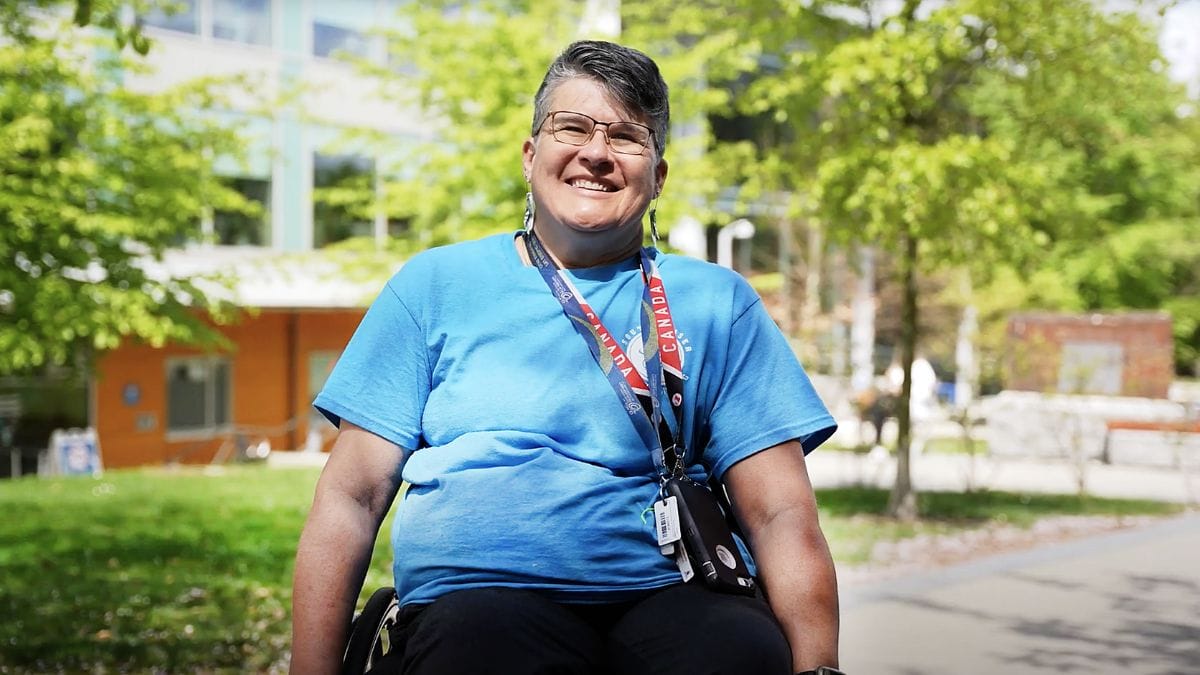
Few ICORD principal investigators are as stylistically inclined as Dr. Andrei Krassioukov, whose collection of sports jackets would surely put Don Cherry’s to shame. So maybe we shouldn’t be too surprised that one of Dr. K’s lab’s current projects is adaptive clothing that doesn’t sacrifice style. It must be noted, however, that FashionABLE is somewhat of a departure from Dr. K’s typical research focus—after all, he’s a physiatrist and globally recognized authority in autonomic and cardiovascular complications in SCI.
“The project stemmed out of Dr. K’s many years of experience working with people with SCI, and his observation of the lack of options with adaptive clothing,” says FashionABLE project leader Tami Kalimullina, a graduate student in the Krassioukov lab. “He couldn’t help but notice that there are limited commercial options available, and that often, what is available doesn’t meet the unique needs of many people. He also noticed that, in making accessible clothing, fashion too often is an afterthought. The FashionABLE project was created to address these gaps, and brings together people with lived experience, healthcare professionals, and fashion designers.” The goals, says Kalimullina, are to identify and create more practical yet fashion-forward choices and options for adaptive clothing—and curate them into an easily-accessed online resource that lets people see what’s already out there, and find ways of getting what they need when they can’t find a commercially available option or an off-the-rack item that fits into their budget.
This is likely the first time this issue has been publicized so widely to the Canadian public. We believe it won’t be the last time.
Through a combination of research and advocacy, we think this issue is gaining traction, and that Health Canada and their provincial counterparts are beginning to take notice.
“Our immediate goal is to create an open-source resource for adaptive clothing, aimed to be a one-stop shop for clothing adaptions and designs that will be easily accessible to both individuals with SCI, and healthcare professionals,” says Kalimullina. “We plan to integrate existing commercially available clothing into our final open-source library, based on feedback we receive from in-depth surveys and interviews. In addition to providing links to adaptive clothing already on the market, the resource will act as a comprehensive guide to creating clothing from scratch, and have ideas for modifying non-adaptive clothing. And we will also include patterns of adaptive clothing that can be easily reproduced in any part of the world.

FashionABLE has other priorities. One is to explore options for adaptive workwear. Kalimullina was recently awarded a WorkSafeBC Research Training Award for her to focus on return-to-work needs of people with SCI.
“Returning to work is crucial to regaining independence after injury, and we aim to create a resource with clothing tips and hacks to facilitate this transition, like modifications for ease of bladder and bowel care, and options for workplace-appropriate attire,” she explains. “The plan is to reach out and conduct interviews with WorkSafeBC and other major employers to discuss clothing allowances and to determine potential articles of adaptive clothing needed for workplace environments.”
Everything undertaken by FashionABLE will be passed under the “form versus function” lens. “On a broader scale,” says Kalimullina, “we hope that this project can inspire changes in the field of adaptive fashion, where adaptive clothing will meet expressed functional needs, while adapting a more fashion forward approach.”

SCI BC is pleased to be a project partner and play a role in moving FashionABLE forward. Recently, Peer Program Coordinators Teri Thorson and Ryan Clarkson travelled with the FashionABLE team to the American Spinal Injury Association (ASIA) conference in New Or-leans. Dr. K’s team presented an adaptive clothing course and a fashion show show-casing adaptive designs developed by Chloe Angus, a Vancouver-based fashion designer and SCI BC peer, and Grace Jun, fashion designer at the Open Style Lab in Atlanta, Georgia. Thorson and Clarkson, along with SCI BC peer John Chernesky, were on hand to model the designs.“ Teri has been our consultant since the conception of the project and is one of the reasons the show in New Orleans was a massive success,” says Kalimullina. “We hope to hold a similar event in the future to showcase more adaptive fashion-forward clothing and involve members of SCI BC to model these designs.”
Currently, FashionABLE is recruiting participants to complete online surveys and interviews to learn more about the various perspectives and practices of adaptive clothing.
“If you’re a person with chronic SCI, or a healthcare professional with more than a year of experience working with people with SCI, we would love to hear from you,” says Kalimullina. “SCI BC members are more than welcome to participate in our surveys and interviews, and we hope to hear many perspectives. We also look forward to sharing the final FashionABLE resource with the SCI BC community and always value its members’ feedback and suggestions.”

We’d like to point out that, in selecting Kalimullina as the project lead, Dr. K appears to have found a real champion for adaptive clothing.
“Self-expression through fashion is important to me, and this project highly resonated with me—I believe individuals should not have to sacrifice their self-expression for functionality,” she says. “I became involved with this project just before the current surveys were created, and will continue to assist with interviews, analysis, and creating the final resource. I’ve really enjoyed the process, as this is my first study where I interact with individuals and hear their perspectives, which gives more depth to my pre-clinical work. I’ve also had the opportunity to work with an excellent interdisciplinary team, from whom I’ve learned a lot.”
The FashionABLE project is funded in large part by a grant from the Craig H. Nielsen Foundation. You can find out how to get involved and contribute by visiting icord.org/studies/2022/07/fashionable/.
This article was originally published in the Fall 2022 issue of The Spin. Read more stories from this issue, including:
- Synchronized Stimulation
- SCI & Immunity
- Can-do Cadieux
And more!




